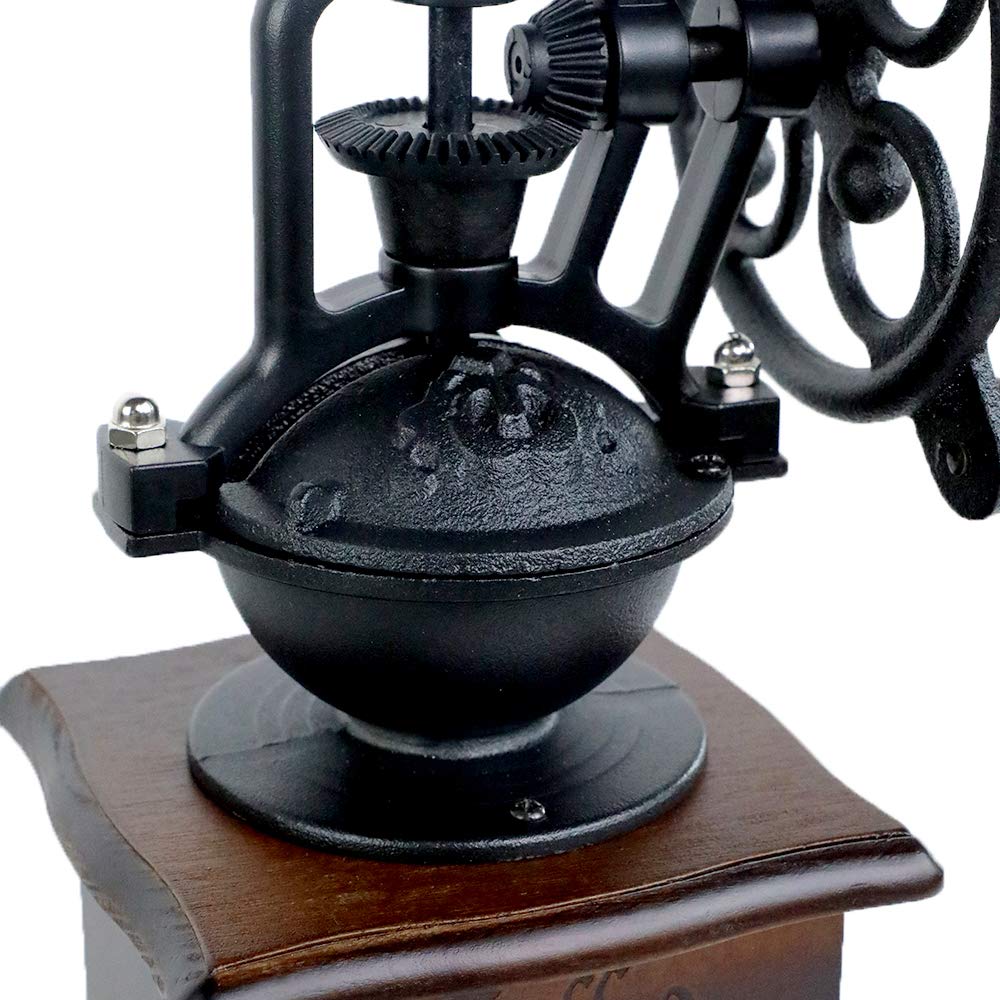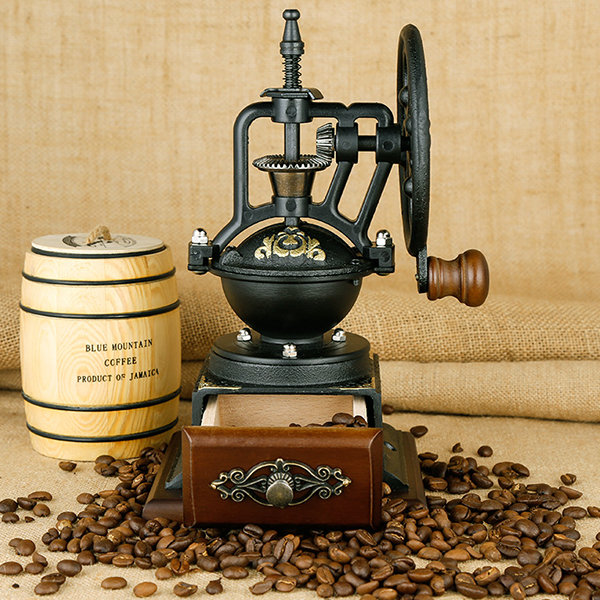Introduction
Dating an antique coffee grinder can be an intriguing journey into the past. Coffee grinders have long held a vital place in coffee preparation, evolving in style and functionality over centuries. Learning to date these pieces can enrich your appreciation for their history. Numerous factors contribute to their age, including design, material, and even specific markings. This article will provide you with a structured approach to accurately determine the age of your antique coffee grinder.
Understanding the Evolution of Coffee Grinders
The Early Beginnings: Pre-Industrial Revolution Grinders
Coffee grinders date back to ancient civilizations. Initially, they were simple hand tools made from primitive materials. People would grind coffee beans using mortar and pestle. The introduction of mechanical grinders came with the Industrial Revolution. These grinders featured intricate designs and innovative mechanisms. As a result, this led to changes in both form and function. The early machines often showcased artisanal craftsmanship. In some cases, these pieces feature wooden bodies and metal grinding mechanisms, which were durable and effective.
By observing the construction of these early grinders, collectors can identify their historical significance. Characteristics to look for include the type of wood used and the style of the metal grinding mechanisms. Brass, cast iron, and tin are common materials found in early grinders. Additionally, you might notice the absence of brand names or markings, which were not a priority in earlier manufacturing processes. Collectors need to pay attention to these details as they help trace the grinder’s origins.
The Rise of Brand Names and Mass Production
As the 19th century progressed, the coffee grinder market began to evolve rapidly. The mass production of grinders allowed for affordable pricing, making them accessible to the general public. Major brands started to emerge during this period. For instance, the United States saw the rise of companies like Armin T. Ernst and others, which produced hand-cranked grinders. These brands introduced unique designs, sometimes featuring ornate decorations and intricate mechanisms.
In this era, often, you will spot specific logos or brand names stamped onto the grinders themselves. While some may assume that all grinders from this period had easily identifiable markings, this is not the case. Therefore, better research may be necessary to pinpoint a grinder’s date accurately. Understanding this shift will help collectors evaluate their pieces correctly. Hence, it’s essential to consider the transitional nature of various designs and the brands associated with them.

Identifying Key Features and Their Significance
Assessing Materials and Construction
To accurately date your antique coffee grinder, evaluating the materials used is crucial. Early grinders were predominantly crafted from durable hardwoods such as oak and mahogany. You may encounter pieces made from more exotic woods, especially in the 18th and 19th centuries. The choice of material speaks volumes about the grinder’s quality and age. Grinders made from less expensive materials might be later models.
Moreover, the construction techniques provide further clues. Joint types, for example, reveal a lot about craftsmanship. Mortise and tenon joints were popular among early artisans. Conversely, later models may feature more industrialized assembly methods. It’s also worth checking for any signs of wear or repairs. If you note any patchwork or refurbishing, it could indicate a more recent modification. Therefore, this investigation plays a significant role in determining a grinder’s timeline.
Examining Design Features and Aesthetics
Another valuable aspect to consider when dating an antique coffee grinder is the design features. Different periods had distinctive styles, which further aids in dating. For instance, if your grinder incorporates elaborate carvings or highly decorative elements, it likely dates back to the Victorian era. On the other hand, a simpler, more minimalist design may indicate a later period, such as the mid-20th century.
It’s not just aesthetics that matter; functional design also provides hints about age. Early grinders often had a manual crank mechanism. Afterward, electric grinders emerged, profoundly altering the coffee grinding landscape. Look for features such as adjustable grind settings or differing capacities. These functionalities can also be indicative of specific manufacturing periods. Transitioning between manual to electric mechanisms represents significant leaps in technology that can help pinpoint the correct time frame.
Researching Brand Names and Maker Markings
Recognizing Famous Coffee Grinder Brands
Many collectors may not realize how important brand recognition is in dating coffee grinders. Brands serve as essential historical records. Therefore, knowing the prominent brands can put you on the right track. Some well-known brands include Bunn, Hario, and Zassenhaus. These names are synonymous with quality and innovation in coffee grinding.
Interestingly, many brands evolved their designs and technologies over the years. By researching specific brands, you can pinpoint manufacturing dates. For example, knowing that Zassenhaus started making grinders in 1867 can help place your piece in context if it bears their name. Some collectors also refer to manufacturers’ catalogs, which document their various designs through the years. Such catalogs may provide key insights into the evolution of specific models.
Decoding Makers’ Marks and Identifying Rare Pieces
Makers’ marks can also serve as ultimate identifiers. These marks often include the brand logo, but may also provide location and production year details. Therefore, it’s imperative to examine your coffee grinder for any engravings or stamps. Keep in mind that older pieces may have less polished markings. As a result, you may need to employ care when decoding these inscriptions.
Additionally, identifying rare pieces becomes easier through meticulous research. Some brands produced unique items that had limited releases. For instance, a grinder with a rosewood casing or rare design executions might be a sought-after collectible. Identifying such a piece can greatly affect its market value. Therefore, a comprehensive understanding of makers’ marks can provide added value when dating antique grinders.

Investigating Additional Sources of Information
Utilizing Books and Online Resources
Once you start examining your coffee grinder, supplementing your knowledge becomes vital. Various resources can assist in gathering additional information. Books dedicated to coffee antiques and vintage grinders can be invaluable. Literature could include photographs, technical specifications, and brand histories. These sources offer crucial insights that can help you determine your grinder’s age.
The internet is another fantastic resource for information seekers. Websites, forums, and social media platforms feature communities of collectors and historians. Engaging with these communities can yield valuable insights. The more you connect and talk with other enthusiasts, the better you’ll learn. Additional resources may include antique dealer websites, auctions, and estate sales listings.
Consulting Experts and Appraisers
When in doubt, consulting an expert may be the best route. They can provide valuable insight based on years of experience in antiques. Professional appraisers specialize specifically in coffee grinders or general antiques. Their expertise can offer a more precise dating of your grinder, considering nuanced details you may overlook.
Experts may also help in establishing your grinder’s market value. This knowledge could be crucial should you decide to sell or insure the item. Refining your understanding through expert consultation enriches your overall experience. When dealing with antiques, every detail contributes to the story behind the piece, revealing its unique history.

Final Thoughts
Dating an antique coffee grinder can be a rewarding endeavor. By employing research strategies, examining key features, and recognizing brand names, you can uncover a wealth of information.
In conclusion, this process goes beyond simple dating; it is about appreciating the craftsmanship and innovations of a bygone era. Each coffee grinder has a tale to tell, and you are now equipped to listen. Understanding its age, significance, and unique attributes adds a layer of complexity and enjoyment to your collecting journey. So, embark on this fascinating exploration and let the history of your coffee grinder unfold.
